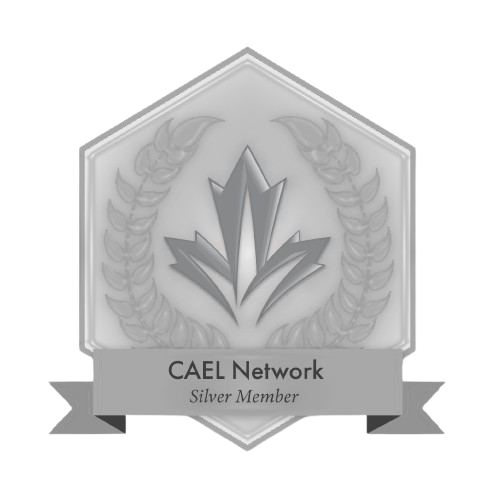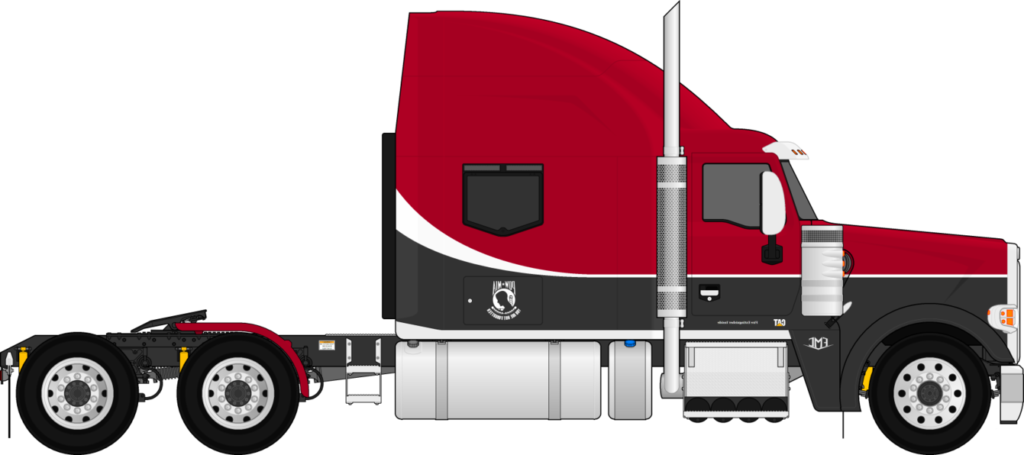Canada LMIA
Employers in Canada who would like to hire someone from another country need to first apply for LMIA(Labour Market Impact Assessment). This article will help you to understand everything about LMIA. We will explain to you about the paperworks, what you need to do, how the process works, about the cost, regulations to follow and when things should happen. And also will give you some tips to make your LMIA application successful and also address frequently asked questions by Canadian employers.

Fill this form for more information
1. What is LMIA in Canada?
Before hiring a foreign worker a Canadian employer needs to get an LMIA which is a document from Employment and Social Development Canada (ESDC). ESDC will evaluate the potential effects of hiring a foreign worker on Canada’s labour market. ESDC will grant your business a positive decision(LMIA) to hire a foreign worker if they find the impact on the Canadian market positive or neutral. By using LMIA the government can make sure that by hiring a foreign worker won’t affect local workers.
Not all employers are required to apply for LMIA. By using the International mobility program you can check whether you can hire international workers or not.
2. How to Get LMIA Work Permit: Step-by-Step
The following application process is required to follow in order to get the LMIA permit.
Step 1: Identify the appropriate NOC for the occupation
Step 2: Determine the salary rate for the occupation
Step 3: According to the job requirements, draft a job post.
Step 4: Advertise the job post for at least one month
Step 5: Interview local applicants
Step 6: Get all required documents and submit the LMIA application
Step 7: Pay LMIA fees
Step 8: WIth an ESDC officer attend the interview
Step 9: Support your foreign workers work permit application
3. LMIA processing times in 2024
The processing time can vary from weeks to months. With the current conditions normally EDDC updates the processing times.
Average processing time for February 2024:
- Global Talent Stream: 1-2 weeks
- Agricultural stream: 1-3 weeks
- Seasonal Agricultural Worker Program: 1-2 weeks
- Permanent resident stream: 3-4 months
- High-wage stream: 2-3 months
- Low-wage stream: 2-3 months
4. Cost of LMIA application
You should budget around $5,500 to $8,000 per worker and also other costs also involved when considering hiring a foreign worker through LMIA application.
- Advertisement costs: your expected budget will be around $500 – $600 if you are advertising on multiple paid platforms.
- LMIA application fee: per employee the government fee for LMIA application is $1,000.
- Work permit fees: an additional amount of $480 – $550 to cover worker application fees, biometric collection fees and medical examination fees if you are covering your workers permit application fees.
- Legal fees: based on the complexity of the case, legal assistance fees can vary from $3,000 – $7,000 per worker.
Note that depending on the job offer and salary in this estimated cost, additional cost hasn’t been added such as the return flight fare of the worker.
Employers must be aware that they are legally required to cover all application fees for LMIAs. Employers are not allowed to transfer these costs directly or indirectly to foreign workers under Canadian law. Recruitment, job orientation, first aid training and other fees are prohibited. Make sure that under any circumstances foreign workers are not charged in the hiring process either by recruiter or third parties.
5. Approval Rate for LMIA in 2024
Established businesses typically have 95% success rate with the LMIA applications according to our experience. In contrast businesses that have been in operation for less than a year usually have success rates that range between 65% and 85%. Your LMIA application may be rejected for a number of reasons and the most common reason is incorrect or insufficient advertising. Application denials frequently result from employer’s failure to pay salary or meet the employment requirements. To increase your chance of getting your LMIA approved you should consult with an experienced corporate immigration lawyer.
6. How can the correct NOC for your LMIA application be identified?
Canada’s system for classifying the various jobs people perform in the labor market is called National Occupational Classification (NOC). in order to give a proper understanding of the labor market it is updated every five years in partnership with statistics canada. NOC ‘s most recent version was made available in 2021. First step for employers looking to hire foreign talent is selecting the right NOC occupation. Your LMIA application outcome can ultimately be influenced by NOC classification which is an important factor in determining the salary rate and ESDC evaluation of local job opportunities. And also when determining whether to approve your request for a temporary foreign worker IRCC will use the NOC classification to check the employment requirements for your position. Use the following steps to identify the correct NOC for your position:
- Search the NOC: Visit NOC 2021 and search by your occupation title.
- Review multiple NOC options: for each position you will find several NOC applications. Selecting the appropriate NOC requires carefully evaluating the lead statements in the NOC, the listed job duties and the employment requirements because of the wide range of the job titles in 2021 NOC in which the significant overlap among them. Choose the best NOC by considering more factors than just the official job title. It is important that responsibilities and job requirements you have for your position match which is stated in one or more appropriate NOC’s.
- Assess the local market conditions: the overall state of the labor market for each NOC occupation classification in a specific geographic area should be considered when selecting your NOC. To arrive at an NOC occupation classification that is both accurate reflection of the proposed job offer and where there is also a recognised shortage of local talent you should perform labor market research on each potential NOC occupation (Job Bank Labour Market Information is a good place to start).
- Confirm minimum salary for the position: you need to make sure that wage for the nOC occupation classification you have selected is within your budget. For foreign workers many employers base pay on what other employees in the company make or what the candidate accepted. In order to receive a positive LMIA you have to pay the foreign worker the standard rate. There might be occasions when you have to pay your foreign talent worker more wages compared to your local staff.
- Ensure that your candidate meets the requirements for the NOC: finally you need to confirm that the candidate meets the employment requirement for the proposed NOC occupation classification. Immigration officer or the Citizens Security Administration (CCSA) will finally issue a work permit that will definitely decide whether the foreign worker meets the employment requirements, even though ESDC usually doesn’t. Once you have gone through all the process for LMIA, it’s more frustrating that the permit for foreign workers to work in Canada has been rejected.
7. What wage should offer to foreign workers?
When submitting an application for LMIA an employer must make sure that the foreign worker will be paid at least the prevailing wage for the position and the area in which it will be employed OR if that rate is higher the wage you currently pay your current employees for the work and area. Use the procedures listed below to find out the market rate for your job:
- Relevant NOC occupation classification must be identified.
- Go to the job bank website and choose “by wages” under the Explore the market section. After that enter the 4 digit NOC classification.
- Next is depending on the location you can choose the appropriate options. Refer to Provincial and subsequently the National median wage if there is no wage record for the relevant occupation or relevant geographic area.
- The pay that needs to be met is the median wage. But note that a few ESDC officers stated that they might expect significantly higher pay when a senior position is demanding.
Your LMIA will fail if you are reluctant to give your foreign employee the median wage. The base salary must equal the current median wage rate if you provide other types of compensation such as commissions. Take note of the requirement for employers to periodically review prevailing wages and guarantee that foreign workers receive the revealing wages at the beginning and throughout the employment term.
8. How to draft a job posting for LMIA application
For LMIA application success drafting a good job posting is vital. Many Canadian employers only focus on hiring needs and fail to meet the ESDC’s requirements when drafting a job post. Failure in meeting the requirement will result in the rejection of your application for insufficient recruitment efforts. In conclusion, creating job posting effective for LMIA purposes requires strategic planning and matching your company’s hiring requirement with both ESDC’s guidelines and IRCC’s specifications.
Your LMIA job posting must include the following information:
- Company name and business address
- Job title
- Job duties – if advertising for multiple vacancies specify duties for each. Do not just copy and paste duties from the NOC occupation classification.
- Employment terms for example permanent or project-based
- Language requirements
- Wage details which including any raises, performance pay or bonuses:
- A wage range can be provided but the minimum wage must meet prevailing standards
- Benefits offered (if applicable)
- Work location which can be local area, city or town
- Number of positions
- Contact details of the employer: email address, fax number, or mailing address
- Skill requirements which includes education and work experience
9. How to advertise your position for LMIA application
In order to advertise for an LMIA you should first create an employer account on Job Bank. This is because job advertisements must be posted on Job Bank(or its equivalent provincial/territorial sites) for a minimum of four weeks, they must stay active until the LMIA is approved. It may require two weeks to register an employer account on Job Bank and it will take an extra three to five days for your job posting to go live. Don’t advertise anywhere else unless your Job Bank ad is live and active.
You can post your job ad on other sites after it’s active on the Job Bank. As a precaution posting your job on three to four other platforms can help even though you must post on two more sources in addition to the Job Bank. If one source is not acceptable then you can use the other platform which supports the LMIA application. In our practice we typically post advertisements on at least five different websites which include Job Bank. It is important to target underrepresented groups in your advertising efforts to meet the guideline established by ESDC and Service Canada. This includes placing advertisements on websites that meet the targeted groups such as Indigenous peoples, vulnerable youth, immigrants, and persons with disabilities. Advertising platforms should be carefully chosen, making sure they align with the industry and appeal to persons who hold the necessary training, work experience, or skill level.
You can use variety of recruitment strategies as an employer such as:
- Print media, including national or provincial/territorial newspapers, magazines with national reach, specialized journals, and newsletters from professional associations.
- General employment websites (examples include Indeed.ca, canadastop100.com, vault.com, eluta.ca, glassdoor.ca, LinkedIn, workopolis.com, monster.ca, etc.).
- Occupation-specific websites tailored to particular fields like accounting, marketing, biotechnology, education, engineering, and more.
Make sure to use different recruitment efforts and avoid targeting the same demographic. For example do not use Workopolis.com and Monster.ca simultaneously or Craigslist and Kijiji to prevent overlap in audience targeting.
In our practice job advertisement for an LMIA looks like:
- Job Bank – mandatory (Cost: Free)
- Source 1: Canada wide source: Indeed.ca, Monster Jobs, Glassdoor or Eluta.ca (Cost: $200-$600 for 4 weeks)
- Source 2: Occupation-specific platform: company’s website, specialized platforms or print media
- Source 3: Backup Job Posting: Allstarjobs.ca (Cost: $40 for 90 days)
- Source 4: Vulnerable Group 1: Newcomers and new immigrants: newimmigrantjobs.ca (approx. $50)
- Source 5: Vulnerable Group 2: Aboriginal groups ($117 per job posting)
10. Some additional tip
- Keep your advertisement proof consistent: making sure that all of your ads including Job bank run concurrently for 4 weeks. Collect proof from your weekly job postings. Along with LMIA applications provide proof that job ads were advertised continually for at least 4 weeks. This is important because the LMIA application can be affected by a single day’s delay.
- Be proactive with Job Bank: renew the post asap as it is going to expire in order to avoid a gap. This will support maintaining proof that ESDC reviews when examining your hiring practices.
- Be proactive with documentation: Don’t wait to collect evidence until the end of the advertising period. Refreshing posts on certain websites can give the impression that the advertisement was not there for the entire four weeks. Timestamped weekly screenshots are very helpful in supplying the required proof.
11. How to demonstrate talent shortage for your LMIA Application
After you have finished your job on a variety of media carefully go through the applications you have sent. Start by keeping track of the total number of local applicants. Once you have reduced your list to the top 10 then call each applicant to see if they are interested in the job and are they a good fit. Ensure that you record the time and date of every screening call. Invite the top three applicants to a formal interview after that. Consider interviewing two or three more candidates from your list of applicants who are unable to meet the job requirements.
Employers often believe that if they extend a job offer to a local applicant they cannot move forward with filing a LMIA application. This notion that “everything or nothing” is false. Even if a local candidate is hired for the position you can still proceed with your LMIA application. If your new hire has problems you have 1 year to use a positive LMIA decision as a backup plan. Hiring locally can strengthen the LMIA application and increase the likelihood that it will be approved.
Finally, it’s important for you to record your recruitment efforts. For guidance you can download our free Recruitment Efforts Report template if you’re not sure how to proceed.
12. How to submit your LMIA application
The specific documents required vary depending on the LMIA stream but generally include the following:
- LMIA application form
- Job offer letter
- Recruitment Efforts Documentation
- Transition plan
- Processing fee
- Union consultation
13. How to prepare for your interview with the ESDC Officer for your LMIA application
The important step in hiring foreign workers is the LMIA interview with an ESDC officer. It is vital that you come to the interview well prepared and knowing what your company needs for the position that you are trying to fill. The following are the advice that help employers to prepare for their LMIA interview:
- Who should attend the interview with ESDC? Select an employee who possesses extensive knowledge for your company operations. This person should be ready to talk about the position and the need for a foreign workers to hire domestically. It can be very helpful to have your legal representative during the interview. When responding to legal representatives they can offer guidance and assistance in relation to the rules and laws.
- Have your documents ready: your great allies will be documents and records. Make sure you have your business number, operating names and other relevant information. Prepare a detailed explanation of your recruitment efforts including your job advertisement, quantity of applications received and the interview procedures. This includes a breakdown of the qualifications, experience, skills that you’re looking for and how applicants didn’t fit the criteria.
- Practice interview questions: finally practise interview questions with your lawyer in advance. If there is a labour shortage hiring foreign workers will help create jobs or keep canadian employees or hiring foreign workers will help transfer skills and knowledge. These are just a few ways of hiring foreign workers that will benefit your company. Download our free guide to practise interview questions with ESDC officers to rehearse your response.
14. How to support your foreign workers application to work in Canada
In order to guarantee foreign workers successful entry and integration into the Canadian workforce you must support their application to work in Canada. The last step that comes after the LMIA approval is the processing of work permit applications which is the responsibility of the IRCC. It is important to understand that the IRCC has the right to reject the application if they don’t think the applicant is qualified for the position. If the work permit application is rejected it would be very disappointing as a loss of time and money has been spent on it. Give your employee a detailed job offer that explains the responsibilities, terms and compensation of the role in order to reduce the risk.
Giving your employee a letter of support can help them apply much more effectively than just a detailed job offer. This letter should explain your reasoning for thinking the applicant has the skills required for the position and go into detail about how those skills are evaluated. Consider how the employee can carry out their responsibilities even with limited language proficiency if there are language barriers. Provide a description of any support or documentation your company provides in your letter to help employees overcome language barriers. These could include bilingual staff, language training programs and other tools that help with communication. By following these procedures you boost your chance of getting a work permit approved and show that you are dedicated to assisting the transition of your foreign worker.
15. Employer requirements for LMIA
LMIA requirements are hard to meet. Employers in Canada need to obtain an LMIA approval before hiring foreign workers who don’t have the right to work in Canada. The three important requirements are:
- First requirement – employers first need to demonstrate that they have attempted to search for qualified workers who are Canadian citizens or permanent residents. You are unable to find talent workers so you’re forced to hire foreign workers
- Second requirement – it depends on whether you want to hire a low wage or high wage employee. For LMIA purposes your foreign employees will be considered as high-wage if you want to pay them more than the provincial median wage. If their pay is less than the median wage in your province then they will be considered as low-wage workers.
- Third requirement – it is to report on the status of the Transition Plan and inspect compliance with regulations. Only companies who have previously hired foreign workers under the LMIA are subject to these requirements.
16. Hiring high wage workers requirements
You must submit the transition plan with your LMIA application if you like to hire high wage workers under LMIA. The transition plan describes the obligations of the Canadian employer to assist the foreign worker in transition into the Canadian workforce during their employment with the company and/or demonstrate a decrease in talent.
One way to achieve this is by hiring, retraining and upskilling workers who are citizens or permanent residents of canada. Employers can further show their efforts to assist highly skilled temporary foreign employees in obtaining permanent residency status in Canada.
Hiring low wage workers requirements
It is not necessary for you to submit the Transition Plan if you like to hire low paid foreign employees. The government of Canada has put a cap on the number of low wage temporary foreign workers will be subject to.
20% of temporary workers is the maximum percentage you can hire if your company employs ten or more people. Employers in the following sectors and sub sectors that hire workers are eligible for cap limit of 30% for applications submitted between 30 April and 30 August 2024:
- Construction (NAICS 23)
- Food Manufacturing (NAICS 311)
- Wood Product Manufacturing (NAICS 321)
- Furniture and Related Product Manufacturing (NAICS 337)
- Hospitals (NAICS 622)
- Nursing and Residential Care Facilities (NAICS 623)
- Accommodation and Food Services (NAICS 72)
At the start of the work period you are responsible to pay your temporary foreign workers flight tickets to Canada and back. For your employees you also need to provide good housing.
Most of the canadian employers are eligible for LMIA but here are the requirements for that:
- You are capable of paying your foreign workers
- Your business has a real need for foreign workers
- Your business hasn’t fired anyone in the past year
- You must have a legitimate business
- You must provide goods or services
These requirements can vary according to the business and long term plans of foreign workers.
Employers are responsible for all costs related to the LMIA application process. Employers are prohibited by Canadian law from passing along any of these expenses directly or indirectly. It is also important to make sure that recruiters and other parties are engaged in the hiring process. Breaching the rule can result in serious consequences such as fines, workers may be required to repay fees and the government can take legal actions.
It is crucial to deal with the situation with a foreign worker differs primarily in that you have to notify the ESDC office and Canadian immigration authorities as well, especially if you obtained an LMIA prior to hiring. Notify the IRCC and the local ESDC office in writing of the employee’s termination, along with their LMIA number. Await confirmation letters from the two organisations, then keep these records in the worker’s file. This strategy protects the rights of the foreign worker as well as your company.
For LMIA application 50 – 200 points for senior positions under the Comprehensive Ranking System (CRS). These points apply to foreign workers FSW, FST and CEC program applications.
The employer has to apply for it and need to receive it. Workers who wish to gain permanent residency status in Canada may use the LMIA approval from their employer to support their permanent residency application.
Under owner operator LMIA foreign employees can create and fill the offer. It involved creating and acquiring the company or part of it in Canada. The owner operator will have to obtain a work permit. Under the Owner Operator LMIA the applicant must also adhere to the same requirements as employers do under the LMIA. Make sure to learn the changes to the owner operator LMIA program.
All LMIAs, including the Owner-Operator LMIAs are issued by the ESDC.
If your application is accepted then it indicates that you have provided enough evidence that you need to hire foreign worker to fill the position that no Canadian or PR resident can do this time. Giving your foreign workers a copy of their employment letter , LMIA number and confirmation letter will allow them to apply for a work permit and complete the hiring process.
Work permits with LMIA requirements are good for three years. A work permit duration basically depends on the type of the permit, nature of the work and the place of employment. The length of the work permit issued by the Canadian government can vary based on the situation.
In order to obtain an LMIA work permit your Canadian employer must submit an application to the ESDC for the LMIA. The foreign employee can start the application process for a work permit if the application is accepted. For the foreign worker able to work in Canada if they must fulfil all requirements for a work permit. A foreign worker cannot enter Canada with only LMIA approval.
The LMIA process is not free. Companies will be required to pay $1000 for each LMIA application they submit. Employers might need to pay less in some cases. These depend on both the immigration process and salary of the position.
















